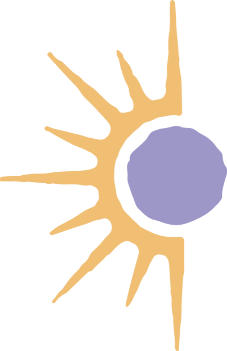Ketamine and Spravato (esketamine) share similarities but have distinct differences that affect their use and approval in treating mental health conditions. Ketamine, originally developed as an anesthetic, has been found effective in treating treatment-resistant depression (TRD) through intravenous (IV) infusions, typically administered in a clinical setting. This off-label use of ketamine has shown rapid antidepressant effects, particularly in cases of severe major depressive disorder (MDD) and suicidal ideation. On the other hand, esketamine, branded as Spravato, is a modified version of ketamine, specifically developed for mental health treatment and FDA-approved for TRD and MDD with suicidal thoughts. Delivered as a nasal spray, esketamine provides an alternative to intravenous ketamine, making it more accessible for outpatient settings under close clinical supervision.
Esketamine differs from ketamine in its molecular structure; it is one of ketamine’s enantiomers, or mirror-image molecules, known as the S-enantiomer. This slight structural difference contributes to esketamine’s more targeted binding to NMDA receptors in the brain, which is thought to enhance its antidepressant effects with fewer side effects at lower doses. Ketamine, in its racemic form, contains both S- and R-ketamine, potentially offering broader effects but requiring close monitoring due to its anesthetic and dissociative properties. While both treatments have proven effective for patients unresponsive to conventional antidepressants, the choice between them often depends on the patient’s individual needs, insurance coverage, and the specific clinical recommendations provided by their healthcare provider.
What is Ketamine?
Ketamine is a medication primarily used as an anesthetic, well-known in the medical field for its rapid-acting properties. Initially developed in the 1960s, ketamine is often administered intravenously and works by blocking NMDA (N-methyl-D-aspartate) receptors in the brain, affecting the glutamate system. This mechanism of action is unique compared to conventional antidepressants, which typically target neurotransmitters like serotonin. Recently, ketamine has gained attention in psychiatry for its antidepressant effects, especially in treating treatment-resistant depression (TRD) and major depressive disorder (MDD). Administered at low doses, ketamine infusions can alleviate severe depressive symptoms and reduce suicidal ideation, often with faster onset than standard oral antidepressants.
In addition to TRD, ketamine is explored as an off-label treatment for various mood disorders, bipolar disorder, and even certain chronic pain conditions. Its ability to offer rapid relief from depressive symptoms has made ketamine an innovative option for those who have not responded to traditional medications. However, ketamine’s use for depression requires careful clinical oversight, as it can produce dissociative side effects and influence blood pressure and sedation levels. This unique profile has made ketamine a transformative yet complex tool in mental health treatment, pushing the boundaries of psychopharmacology and offering new hope for patients struggling with severe mood disorders.
What Can Ketamine Therapy Treat?
Ketamine therapy is an evolving treatment in psychiatry that has shown significant promise in addressing various mental health and mood disorders, especially for patients who have not found relief with conventional antidepressants. Its fast-acting nature and unique impact on the brain’s glutamate system make ketamine therapy a valuable option for treatment-resistant conditions, particularly where traditional options have been ineffective or slow to act. By offering rapid relief from symptoms, ketamine therapy has become a hopeful alternative for patients facing severe and persistent mental health challenges.
Disorders that ketamine therapy can treat include:
- Treatment-Resistant Depression (TRD)
- Major Depressive Disorder (MDD)
- Bipolar Disorder (specifically depressive episodes)
- Suicidal Ideation
- Post-Traumatic Stress Disorder (PTSD)
- Anxiety Disorders (studies are still emerging)
- Obsessive-Compulsive Disorder (OCD)
- Certain Chronic Pain Conditions (such as complex regional pain syndrome, or CRPS)
While ketamine therapy shows efficacy across these mental health and pain disorders, it’s crucial to approach treatment in a controlled clinical setting. Ketamine’s effects on neurotransmitters and its dissociative properties mean that therapy sessions need close medical supervision to manage any side effects, such as increased blood pressure or sedation. When administered properly, ketamine therapy can provide substantial relief, paving the way for improved mental health and offering an innovative solution for those with challenging conditions.
How Effective is Ketamine Therapy?
Ketamine therapy has proven to be a remarkably effective treatment for individuals with treatment-resistant depression (TRD) and other mood disorders, with clinical trials showing a rapid reduction in depressive symptoms and suicidal ideation for many patients. Unlike traditional antidepressants, which can take weeks to show effects, ketamine often begins working within hours, providing an alternative for those facing severe depressive episodes. Its impact on the glutamate system, specifically NMDA receptors in the brain, contributes to its fast-acting results, making it a powerful option for patients who have exhausted conventional treatments.
Studies and meta-analyses indicate that ketamine therapy is especially beneficial for cases of major depressive disorder (MDD) and bipolar disorder when standard medications have failed. Evidence suggests that a majority of patients with TRD experience a reduction in symptoms after ketamine infusions, with some individuals achieving sustained improvement over time with maintenance sessions. Although not every patient responds to ketamine therapy, it remains one of the most promising options for severe mental health conditions, with ongoing research examining its long-term efficacy and optimal dosing strategies.
What is Spravato (Esketamine)?
Spravato, the brand name for esketamine, is a prescription nasal spray developed as a breakthrough treatment for treatment-resistant depression (TRD) and major depressive disorder (MDD) with acute suicidal ideation. Approved by the U.S. Food and Drug Administration (FDA) in 2019, Spravato is a modified version of ketamine, specifically the S-enantiomer. This structural adjustment allows esketamine to bind more selectively to NMDA receptors in the brain, amplifying its antidepressant effects while potentially reducing certain side effects.
Unlike conventional antidepressants that often take weeks to show results, Spravato can deliver rapid relief, sometimes within hours, making it an option for individuals experiencing severe depressive symptoms or suicidal thoughts. Administered in a clinical setting under strict supervision, Spravato is combined with an oral antidepressant as part of a comprehensive treatment plan. This protocol ensures that clinicians can monitor side effects such as sedation, dissociation, and increases in blood pressure, making Spravato a potent, FDA-approved addition to modern psychiatric treatment options for patients who have not responded to traditional therapies.
What Can Spravato Treat?
Spravato (esketamine) is specifically designed to treat challenging cases of depression, particularly where traditional antidepressants have proven ineffective. By targeting the brain’s glutamate system through its unique action on NMDA receptors, Spravato provides a rapid and effective approach to alleviate severe depressive symptoms. Its quick onset and FDA approval have made it a valuable treatment option for certain mental health conditions that require immediate intervention, especially in clinical settings where patients may struggle with severe symptoms and need close supervision.
Conditions that Spravato can treat include:
- Treatment-Resistant Depression (TRD)
- Major Depressive Disorder (MDD) with acute suicidal ideation
- Major Depressive Disorder (MDD) in patients who have not responded to two or more traditional antidepressants
Spravato’s efficacy, particularly for patients with suicidal thoughts or those unresponsive to other antidepressants, highlights its potential as a life-changing intervention. While primarily used for specific forms of MDD and TRD, the treatment is always administered in a clinical setting, where healthcare providers can manage any side effects, such as dissociation or changes in blood pressure. For patients who meet these criteria, Spravato offers an innovative and fast-acting solution, providing hope for sustained improvement in their mental health.
Is Spravato Effective?
Spravato (esketamine) has shown promising effectiveness in treating treatment-resistant depression (TRD) and major depressive disorder (MDD) with acute suicidal ideation, particularly for patients who have not responded to traditional antidepressants. Clinical trials demonstrate that many patients experience rapid symptom relief within hours of the initial doses. This quick onset of action sets Spravato apart from conventional antidepressants, which can take several weeks to reach full effectiveness. Spravato’s targeted mechanism through NMDA receptors and the glutamate system appears to support these rapid antidepressant effects, providing hope for individuals facing severe depressive episodes.
In real-world use and controlled studies, Spravato, when combined with an oral antidepressant, has led to sustained improvement in depressive symptoms for a significant percentage of patients. A majority of individuals with TRD show a positive response to Spravato after a course of treatments. While not every patient experiences the same level of benefit, Spravato remains a powerful option for managing severe and persistent depression. Due to its specific action and unique side effect profile, Spravato is administered in a clinical setting, where healthcare providers can oversee each session, ensuring safety and maximizing the treatment’s potential.
Which Therapy is Better?
Determining whether ketamine or Spravato (esketamine) is the better option depends largely on the patient’s unique needs, treatment goals, and medical history. Both therapies have demonstrated effectiveness in treating treatment-resistant depression (TRD) and major depressive disorder (MDD) with rapid antidepressant effects. Ketamine is typically administered as an intravenous (IV) infusion, which has shown fast-acting results, often within hours, and is sometimes used off-label for other conditions such as bipolar depression and PTSD. On the other hand, Spravato, approved by the FDA specifically for TRD and MDD with suicidal ideation, is delivered as a nasal spray, offering a more accessible alternative for outpatient settings and those unable to undergo IV infusions.
The decision between ketamine and Spravato often comes down to practical considerations, such as insurance coverage, treatment availability, provider recommendations, and patient response to each option. Spravato’s FDA approval means insurance companies are more likely to cover it, making it financially accessible to more patients. However, some individuals may respond better to racemic ketamine’s broader composition, as it includes both the R- and S-enantiomers, potentially offering a different therapeutic effect. Ultimately, the “better” therapy is the one that aligns best with the patient’s symptoms, response, and the recommendations of their healthcare provider, ensuring the most effective and sustainable path to mental health improvement.
Are Both Covered by Insurance?
Insurance coverage for ketamine and Spravato (esketamine) treatments differs significantly, largely due to FDA approval and how each therapy is classified. Spravato, as an FDA-approved medication specifically indicated for treatment-resistant depression (TRD) and major depressive disorder (MDD) with suicidal ideation, is typically covered by most insurance companies. This coverage often includes both the cost of the medication and the required clinical monitoring, as Spravato is administered in a supervised healthcare setting to manage potential side effects like dissociation and elevated blood pressure.
In contrast, ketamine infusions for mental health treatment are generally considered “off-label” and are not FDA-approved for depression or other mood disorders. As a result, most insurance plans do not cover ketamine therapy, leaving patients responsible for out-of-pocket costs, which can be high given the need for repeated treatments over time. Some insurance providers may partially reimburse ketamine therapy if it’s deemed medically necessary, but this is less common. Patients interested in either treatment should verify coverage specifics with their insurance provider to understand the financial implications and explore available options for making treatment more affordable.
Find Ketamine Treatment with We Conquer Together
At We Conquer Together, we understand how challenging it can be to find effective treatment for conditions like treatment-resistant depression and major depressive disorder. That’s why we offer both ketamine and FDA-approved Spravato (esketamine) therapies, providing personalized options that may help you or a loved one find relief when other treatments have not worked. Our experienced clinicians are committed to guiding you through each step, ensuring that your therapy is tailored to meet your unique needs in a safe and supportive environment.
If you’re ready to explore ketamine or Spravato therapy, contact our team today to discuss which treatment option may be right for you. We’re here to answer your questions, walk you through the process, and provide the highest standard of mental health care. Reach out to We Conquer Together to take the next step toward lasting improvement and discover how these innovative therapies could make a difference in your life.











